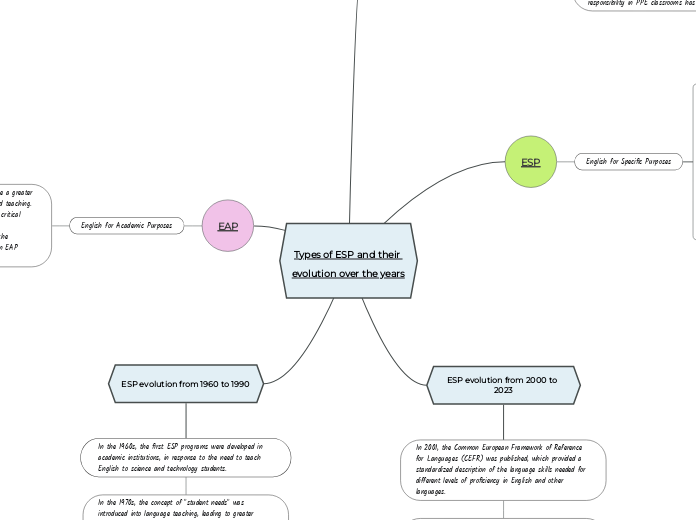przez Carolina Góngora 2 lat temu
191
Types of ESP and their evolution over the years

przez Carolina Góngora 2 lat temu
191

Więcej takich
In the 1980s, new pedagogical approaches to teaching ESP were developed, such as the genre approach and the task approach, which emphasize communication in authentic situations.
In the 1990s, technology began to transform ESP teaching and learning, with the introduction of language learning software and the creation of online courses.
In 2010, the concept of "communicative competence" was introduced in ESP teaching, which focuses on the effective use of language in real situations.
In 2014, the Common Framework for Teacher Digital Competence was established, which promotes the development of digital skills for language teaching, including ESP.
In 2020, the COVID-19 pandemic accelerated the adoption of online learning technologies for language teaching, leading to further integration of technology in ESP teaching.
In 2023, artificial intelligence and machine learning are expected to play an increasingly important role in language teaching, including ESP, by enabling greater personalization of learning and adaptation to the individual needs of students.
For example, the ESP may focus on teaching English for Academic Purposes (EAP), English for Professional Purposes (EPP), or English for Specific Purposes, such as teaching English in engineering or medicine. In short, ELT focuses on teaching English in general, while ESP focuses on teaching English for specific and technical purposes in a particular field.
The ELT and ESP share many common skills and objectives, such as teaching language skills, listening comprehension, reading, writing and speaking. However, while the ELT focuses on teaching general language skills, the ESP focuses on teaching specific language skills and techniques related to a specific field.
The ELT and the ESP are closely related as they both focus on teaching the English language. While the ELT focuses on the general teaching of English as a foreign language, the ESP focuses on teaching English for specific and field-specific purposes.